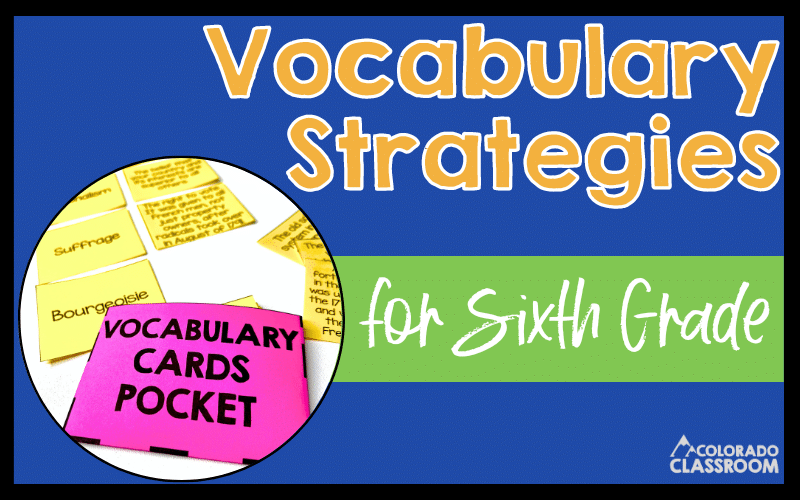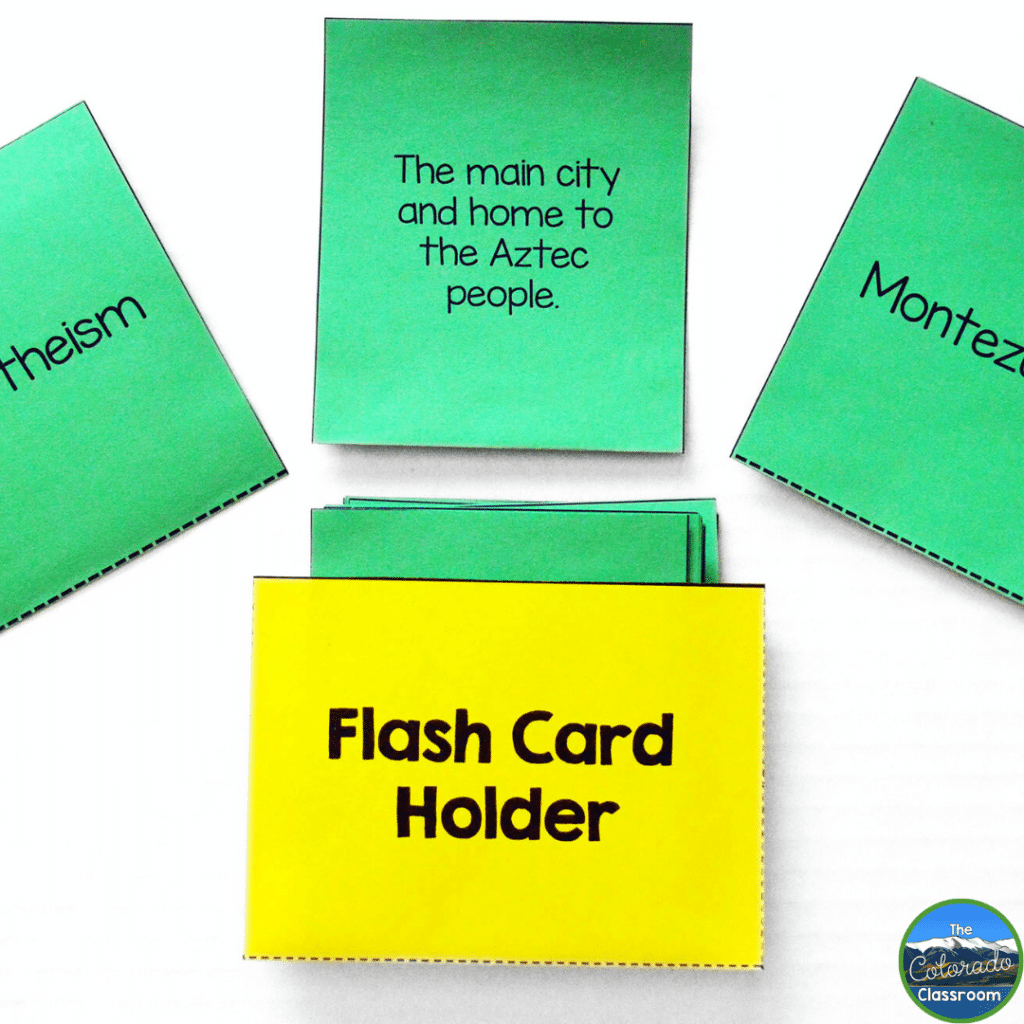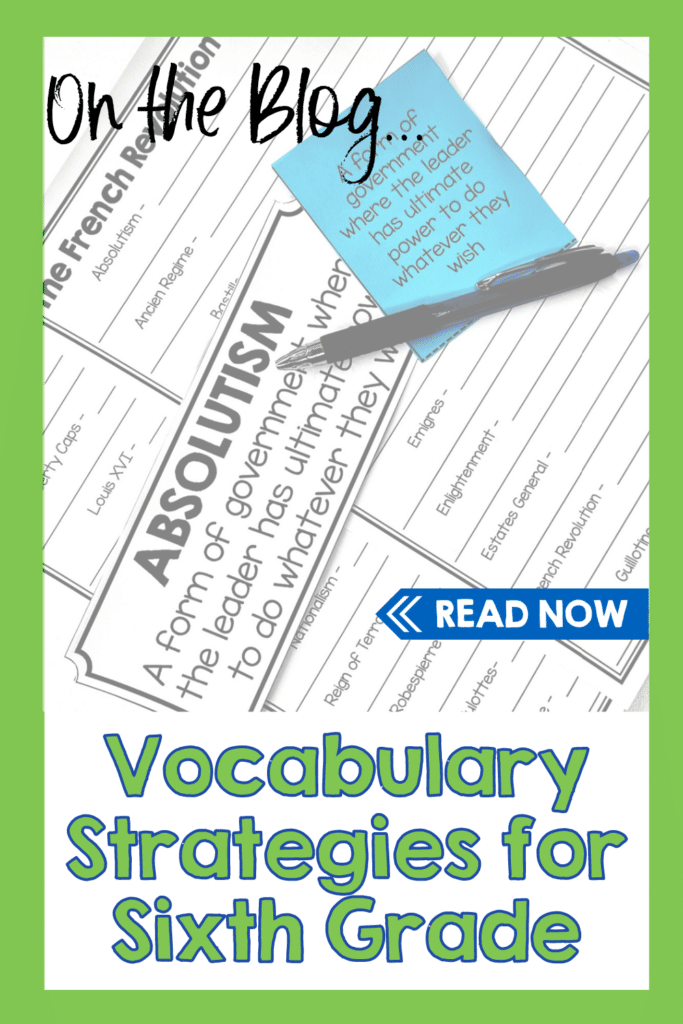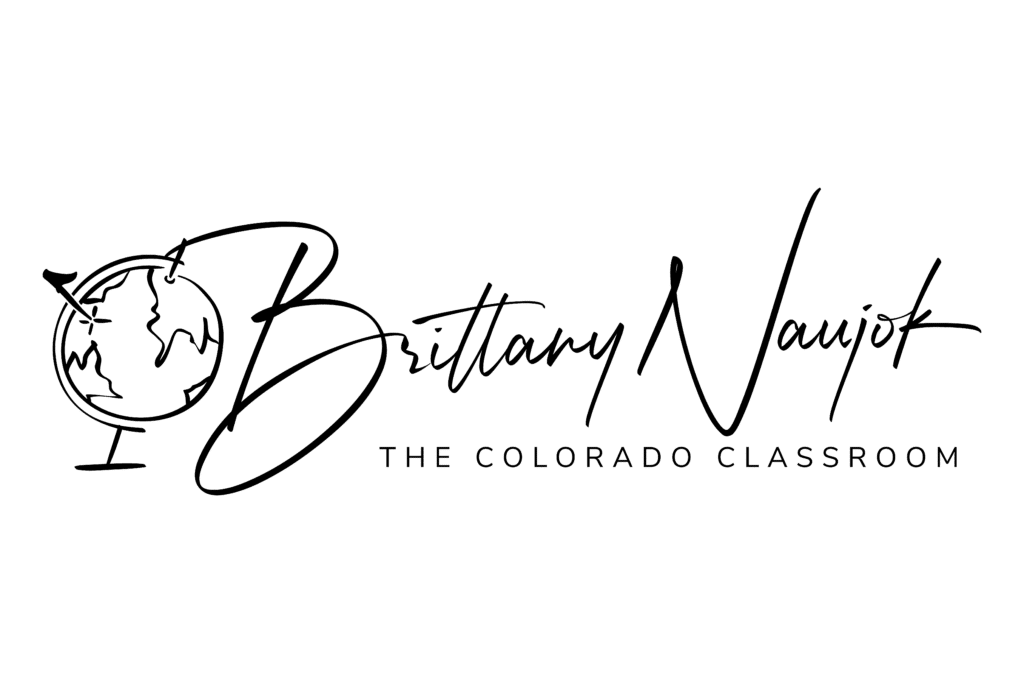Vocabulary Strategies for Sixth Grade
Learning and building vocabulary in sixth grade is such a game-changer! At this level, the words get more complex. We’re not just talking about names like Cleopatra or places like the Parthenon. We’re diving into fascinating terms like “sphinx” and “guillotine” that help bring history and other subjects to life. That’s why my vocabulary strategies for sixth grade are all about making sure our students feel confident tackling these challenging words while keeping it fun and engaging. Today, I’m sharing the six different vocabulary strategies I use throughout my history units!

Benefits Behind Vocabulary Strategies
Teaching vocabulary strategies, especially in sixth grade, is essential for many reasons. At this stage, our students are encountering more advanced texts across all subjects. This means they’re running into bigger, more challenging words that can make or break their comprehension. By giving them solid vocabulary strategies, we’re helping them understand what they’re reading and boosting their confidence to tackle tough material without feeling overwhelmed.
What I love most about teaching these vocabulary strategies is watching students realize that mastering new vocabulary isn’t just about memorizing words. It’s about unlocking the ability to express their thoughts much more powerfully. Whether they’re writing an essay, participating in a group discussion, or even just making connections between topics, having a strong vocabulary gives them the tools to think critically and communicate effectively. Plus, it helps bridge the gap between everyday language and the academic language they’ll need to succeed.
Types of Vocabulary Strategies

Now that we’ve covered why teaching vocabulary strategies is so important in sixth grade let’s dive into the specific strategies I use to make it all come together. I typically provide six strategies in each unit. Each strategy comes with a flexible template that can easily be adapted to fit any classroom’s needs.
What I love is that each strategy can be used for different words, depending on how well it suits that specific word. This way, we’re giving students a variety of ways to connect with the vocabulary and really make it stick. To add even more fun and reinforcement, I also include flashcards with all of my vocabulary lessons. For even more options, I include word puzzle games, such as crosswords, word searches, and scrambles. These activities keep our students engaged while solidifying their understanding of each word!
Four-Fold Strategy

One of my go-to vocabulary strategies is the Four Fold Strategy. It’s super interactive and really helps students break down the meaning of each word. I have students fold a sheet of paper into four columns, labeling them “Word,” “Definition,” “Picture,” and “Sentence.” They take each word from their vocabulary list and fill out each section. Once they’ve completed the sheet, students can cut out the columns, toss them in a baggie, and challenge themselves to reconstruct the sheet. To make it more fun, they can trade baggies with a partner or even combine bags to create one cohesive sheet. It turns vocabulary practice into a game, keeping them engaged while reinforcing their learning.
To see the Four-Fold Strategy in action, explore my unit on Ancient Mesopotamia!
The Frayer Diagram

The Frayer Diagram is another at the top of my list of vocabulary strategies, especially when we’re focusing on more complex concepts. I have my students place the word in the center of the page and circle it. Around that circle, they draw a square or rectangle, creating four sections. On the top left, they write the definition, and on the top right, they list the characteristics of the word. The bottom left is for examples, while the bottom right is for non-examples.
This layout helps them understand not just the meaning of the word, but how it’s used in context. It’s a great way to help them categorize and visualize the word’s full meaning. Now, it doesn’t always work for names or specific people like Marcus Aurelius, but it’s fantastic for abstract terms or objects!
Check out my Ancient Rome Vocabulary unit to see the Frayer Diagram!
Meeting New Vocabulary

Meeting New Vocabulary is all about encouraging our students to make predictions before locking in their understanding. The page is divided into two top boxes. In these boxes, I have my students write the word and draw a picture to represent it. Beneath that, they make their best guess at the word’s meaning and create a sentence based on that guess. Afterward, they look up the real definition and write the correct meaning, along with a sentence using the word correctly. This strategy pushes students to actively engage with the word from the start. It’s always exciting to see how close their initial predictions are to the actual definition.
My Mexican Independence Vocabulary unit showcases this graphic organizer!
Word Analysis
Word Analysis simplifies the process by focusing on three main components: Definition, Contrast, and Examples. This strategy is perfect for our students who thrive with straightforward tasks. It keeps things concise while still digging into the meaning of each word. I have students start with the definition and then move on to contrasts. They have to think about what the word is not. This strategy wraps up with examples that showcase how the word can be used. It’s a more structured approach, but it really helps them drill down into each word.
Make sure to take a look at my French Revolution vocabulary unit!
Word Map

The Word Map is a graphic organizer with a lot of moving parts. It’s fantastic for our students who need a more visual representation of vocabulary. The word goes in the center. Then, they list three examples below it and three similarities are placed vertically on the right. The definition is written above the word. This setup encourages students to see the connections between different concepts and really builds on their understanding of how vocabulary can be grouped and related. It’s a great strategy for more visual learners who benefit from seeing everything mapped out.
Take a look at my Ancient Greece Vocabulary unit for an example of a word map organizer!
Word Sort
Word Sort is one of the most flexible and creative vocabulary strategies I use. I have students group their vocabulary words based on different categories. They can alphabetize them, organize them by people, places, or things, or even sort them by parts of speech. Another fun twist is to categorize words based on whether their partner guessed them when they acted them out or not. The possibilities are endless. It’s always fun to see how students think through the sorting process. This strategy helps them see patterns and relationships between words, which is key to solidifying their vocabulary knowledge.
My Ancient Egypt Vocabulary unit is a good one for using the word sort strategy!
How to Prepare For These Vocabulary Strategies

When it comes to preparing these vocabulary strategies during a unit of study, I always start by identifying the key vocabulary words that will be central to the lesson. Whether we’re exploring ancient China or the Aztecs, I make sure the words are directly tied to what my students will encounter in both reading and discussions. From there, I choose the most effective strategies for each word. Some words lend themselves to visual strategies, like the Four Fold Strategy or the Frayer Diagram, while others might be better suited for word analysis or sorting.
I like to have everything prepped ahead of time, so I provide each student with templates that are ready to go. The templates are flexible, so they can easily adapt to the needs of your classroom or specific words. Alongside the main strategy templates, I often prepare flashcards and word puzzle games like crosswords and word searches. These are great for reinforcing vocabulary in a more relaxed, fun way. This combination of structured strategies and playful activities keeps the learning process engaging. It’s all about giving students different ways to connect with the words. We want to make sure these new terms stick with them throughout the unit and beyond!
Additional Resources
Looking for the complete units for ancient civilizations? Explore the below units that will set you and your students up for success from the start of the unit to the end!
- Teaching Ancient Rome to Your Middle Schoolers
- Engaging and Inspiring Ancient Egypt Teaching Resources for 5th-8th Grade
- Teaching Ancient Greece: A Middle School Adventure in History
Wrapping Up Vocabulary Strategies for Sixth Grade
Teaching vocabulary strategies in sixth grade can be a rewarding experience. By offering a variety of approaches, we’re giving our students the tools they need to confidently tackle those tricky words. We can help them build a strong foundation for their academic future. Whether it’s through the Four Fold Strategy, Frayer Diagram, or word puzzles, these strategies make vocabulary learning engaging and effective. I’ve found that when students have different ways to connect with new terms, the learning sticks. If you want to make vocabulary more fun and meaningful in your classroom, these strategies are a great place to start!
Save for Later
Remember to save this post to your favorite teacher Pinterest board for quick access to these vocabulary strategies!


